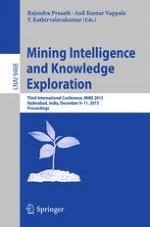2015 | OriginalPaper | Buchkapitel
Significance of Emotionally Significant Regions of Speech for Emotive to Neutral Conversion
verfasst von : Hari Krishna Vydana, V. V. Vidyadhara Raju, Suryakanth V. Gangashetty, Anil Kumar Vuppala
Erschienen in: Mining Intelligence and Knowledge Exploration
Aktivieren Sie unsere intelligente Suche, um passende Fachinhalte oder Patente zu finden.
Wählen Sie Textabschnitte aus um mit Künstlicher Intelligenz passenden Patente zu finden. powered by
Markieren Sie Textabschnitte, um KI-gestützt weitere passende Inhalte zu finden. powered by
